Onigiri Konga is known for being supervised by Onigiri Bongo, a long-established onigiri shop in Otsuka that has been in business for more than 60 years; it was founded in Kamata, Tokyo, in November 2021 and, as of this writing, operates branches in the Akasaka Biz Tower and Haneda Airport International Terminal, in addition to its main shop in Kamata.
When I discovered the existence of Onigiri-Konga for some reason or another, I got my appetite up as usual and thought to myself, “I have to go there once…”. So, on the last day of my business trip to Tokyo, I stopped by Kamata, where the main branch is located, but to my bad luck…
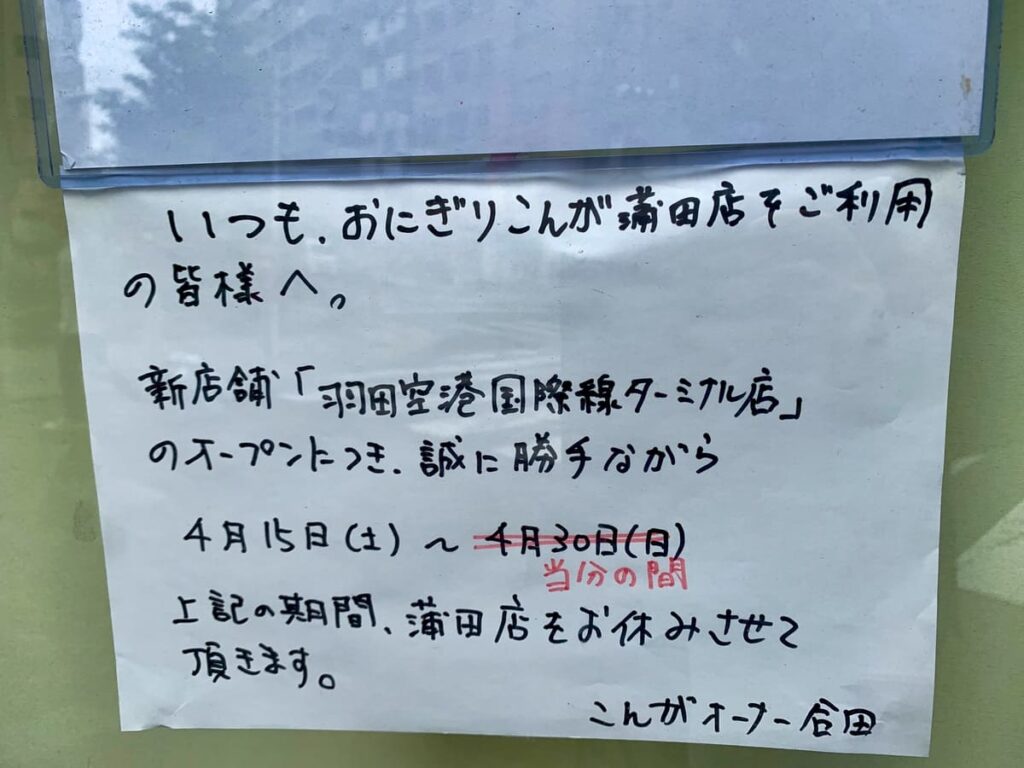
The Kamata main shop was temporarily closed to help with the new Haneda Airport International Terminal shop, which opened on 18 April 2023.
I thought to myself, “This is bad luck…” But you can’t change the reality in front of you. So what should I do? When I thought about it, I came up with the idea of going straight to Haneda Airport. Fortunately, I had time before the bullet train on my way home, and it takes less than 10 minutes by train from Kamata to Haneda Airport. It’s nice to do something like this once in a while.” So I took the Keikyu train straight to Haneda Airport…
Onigiri-Konga Haneda Airport International Terminal Branch is a shop that seems to be more convenient for airport staff than for regular customers…
Onigiri-Konga Haneda Airport International Terminal Branch is located in the Edokoji commercial area on the 4th floor of the International Terminal Building, in the area to the left of the escalator in the middle of the 3rd floor departure lobby. Despite being in a location that doesn’t attract a lot of attention, when I arrived at the shop at around 11:15am, the estimated waiting time was already 20 minutes… and it was very crowded.
Looking at the customers who had gathered at that time, I got the impression that half of them were foreign tourists and the other half were airport personnel. The shop is in the style of a take-out shop with only a kitchen and a counter, and there is no dedicated seating for customers, but there are several free standing tables and chairs placed around the shop so that customers can receive their products and eat them on the spot.
However, almost 100% of the people in uniform who appeared to be airport personnel were using the take-away service. It is unclear to what extent there is demand for this type of service in an airport facility, but it seems that reservations can be made by phone at the Onigiri-Konga Haneda Airport International Terminal shop, so in that sense, I got the impression that this shop is more convenient for airport staff than for general customers….
Onigiri-Konga Haneda Airport International Terminal Branch ordered three onigiri items. What was the difference between Onigiri Konga and Onigiri Bongo?
Let me introduce the three original onigiri I ordered at Onigiri Konga Haneda Airport International Terminal Branch. The three items I ordered this time were Negitoro, Pork Kimchi and Carbonara. Image here…
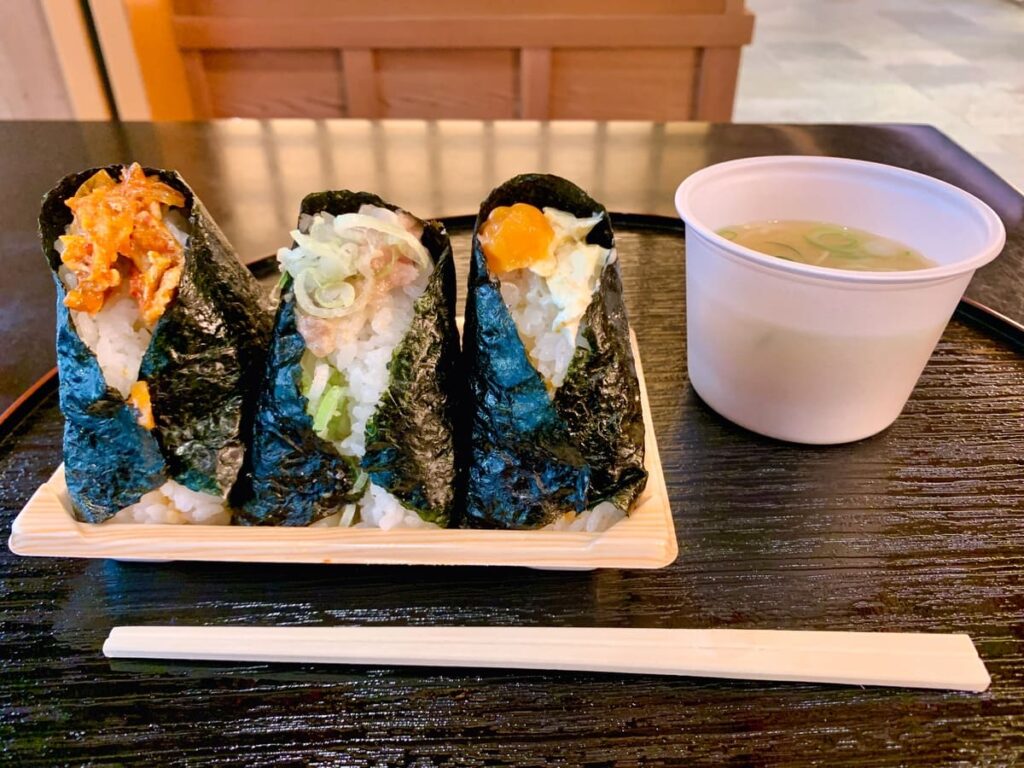
Three types of rice balls with tofu miso soup, all for the price of 1,500 yen. Frankly speaking, I thought it was expensive… In fact, the menu list looks like this…
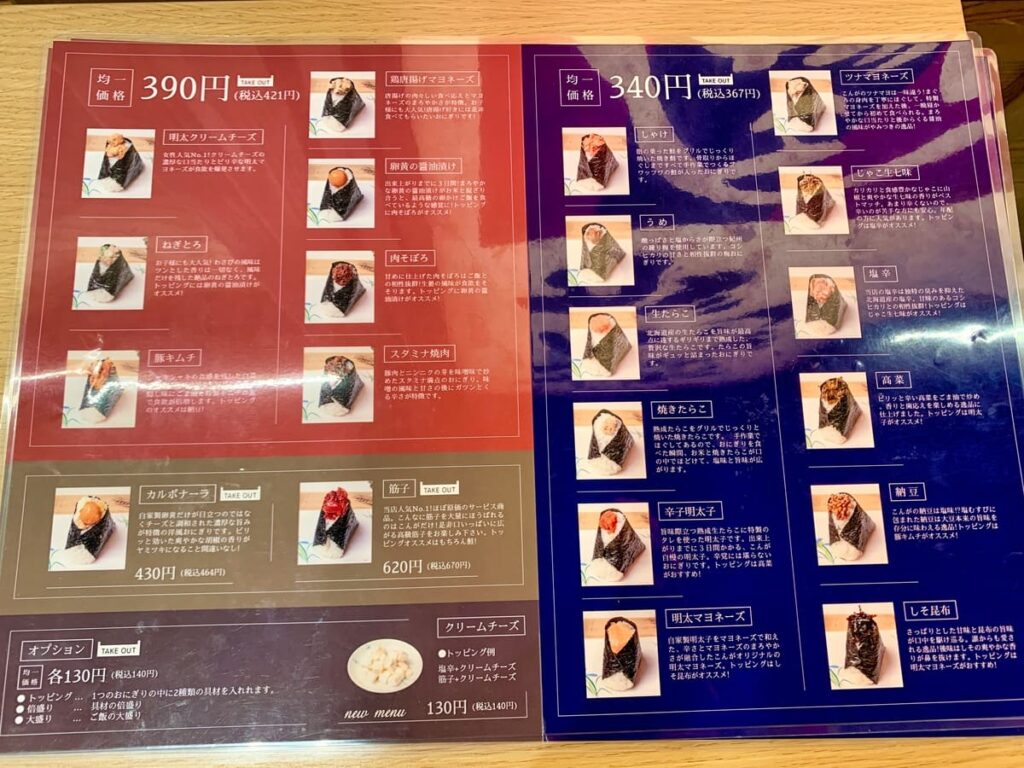
The onigiri menu has more than 20 varieties in total, but the cheapest onigiri with the cheapest ingredients cost 340 yen (excluding tax) per piece, which was sensibly about 20% more than onigiribongo. Is this an airport price? Or is this the same price in all shops?

Well, never mind. Let’s try the actual food. The first dish I tried was the pork kimchi (price 390 yen + tax). Taste-wise, it was as stable as I imagined it would be, but both the pork and kimchi were chopped finely, which made it much easier to eat, plus I could feel the rice and pork kimchi mixing together in my mouth and becoming one.
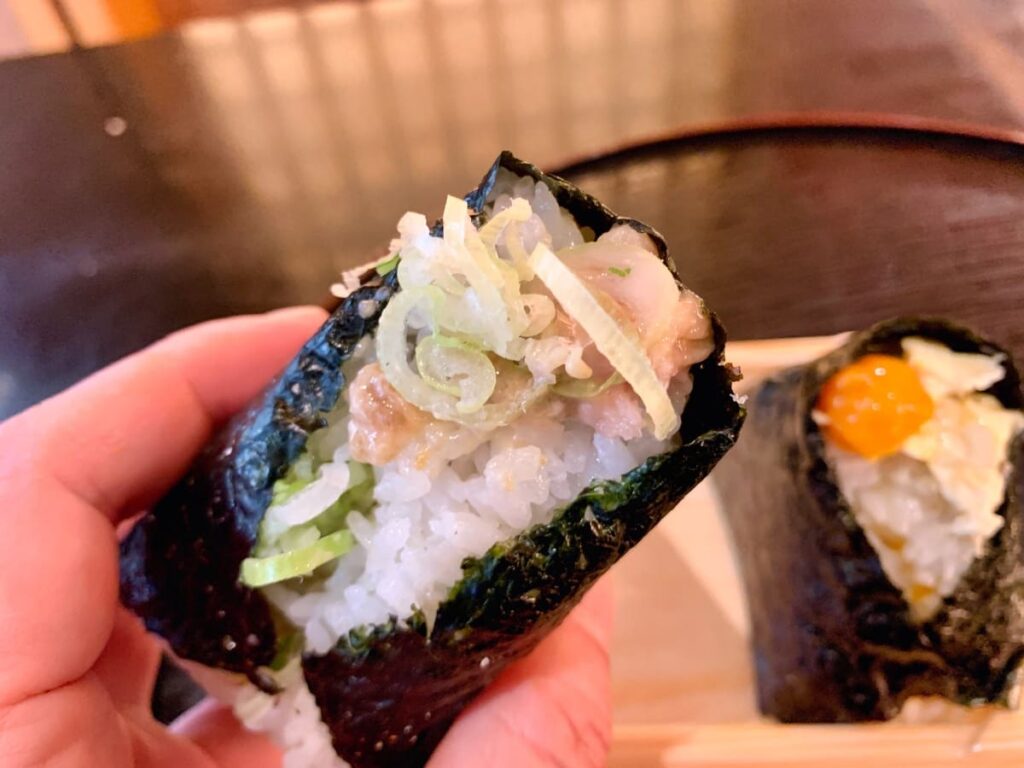
The next dish was Negitoro (price 390 yen + tax). I’m sure it was inspired by the Negitoro, a conveyor belt sushi item. I imagined that this too would have a stable flavour, seasoned with soy sauce. But when I actually tried it, I found an uncomfortable buttery flavour in the sticky texture of the negitoro. I wonder if they add quite a bit of oil… I think this might have different pros and cons depending on your tastes.

And the last dish I had was Carbonara (price 430 yen + tax). The egg yolk and creamy cheese is very rich, and the tangy black pepper adds to it, making it quite exciting. This might be addictive for those who are addicted to it. I was more like, “Wouldn’t this go better with pasta?” I thought it would go better with pasta, but…
Now, let’s talk about some of the differences between Onigiribonga and Onigiribonga that I’ve noticed after actually trying Onigiribonga’s rice balls…
First of all, how the rice is cooked. The rice in Onigiribongo is cooked to be fluffy, whereas the rice in the one we ate this time was rather hard and left a core. This is a matter of taste, so it is not a question of which is better or worse, but because the rice is cooked harder, Konga’s onigiri is more like a ‘bite and eat’ type of rice ball.
On the other hand, Konga’s rice balls are softer and you can enjoy the same sensation of the rice grains melting in your mouth. The rice grains also contain a good flavour and are delicious. The rice used in Konga is called ‘Koshiki Milling Method Rice’, and it seems that a lot of time and effort is put into milling the rice in order to preserve the maximum flavour of the rice…
On the other hand, one disappointing point is that the nori that surrounds the rice is small and rice grains overflow from the gaps between the nori while you are eating. The rice balls at Onigiri no Arinko, an onigiri speciality shop in Sapporo, are like this, but they are also difficult to eat. Can’t you do something about this? I think just making the nori bigger would solve the problem…
Well, putting aside the details, the Onigiri-Konga onigiri I ate this time left me with the feeling that “as expected from Bongo’s supervision…”. It’s totally different from onigiri from convenience stores, and if you order it with miso soup as a set, you’re sure to be in a warm mood.
The price is a little high, but even if you discount that, the fact that a shop specialising in onigiri has been established in one of Japan’s leading international airports is something to be fully appreciated. I hope that this shop will be a catalyst for more and more travellers from all over the world to discover the appeal of Japanese food…
Recommended for your first meal when returning home from an overseas trip… Onigiri Konga Haneda Airport International Terminal Branch is located on the 4th floor of Haneda Airport International Terminal, in the “Edo Koji” area.
Onigiri-Konga Haneda Airport International Terminal Branch, like this, is recommended for people returning from overseas travel. Don’t you feel that standing-only noodles taste even better than usual just after returning from overseas? In the same way, I think onigiri is the perfect meal for people returning home to experience Japan for the first time.
In this sense, I hope Onigiri-Konga will be a success at airports. And if they follow this trend and open onigiri specialty shops at Kanku, Chitose, Fukuoka and other airports… I’m sure I’ll be the first to go to eat onigiri when I come back from abroad in the future.
Now, here are the details of the shop. Shop data is here…

Onigiri Konga Haneda Airport International Terminal Branch Out of 5
.Address: 4F, International Passenger Terminal, 2-6-5 Haneda Airport, Ota-ku, Tokyo 144-0041, Japan Tokyo International Airport (Haneda Airport)
Telephone number: 03-5579-7756
Opening hours: 7:30-21:00
Closed: Same as facilities
Parking: No parking spaces available
Credit card payment: Accepted (also accepts e-money and traffic IC)

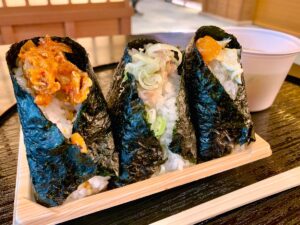
 Grill Ippei Amagasaki
Grill Ippei Amagasaki
Leave a Reply